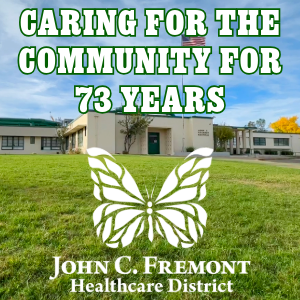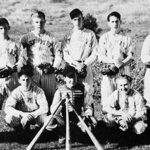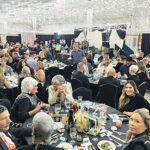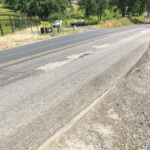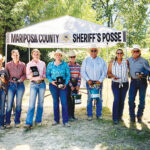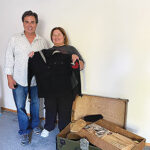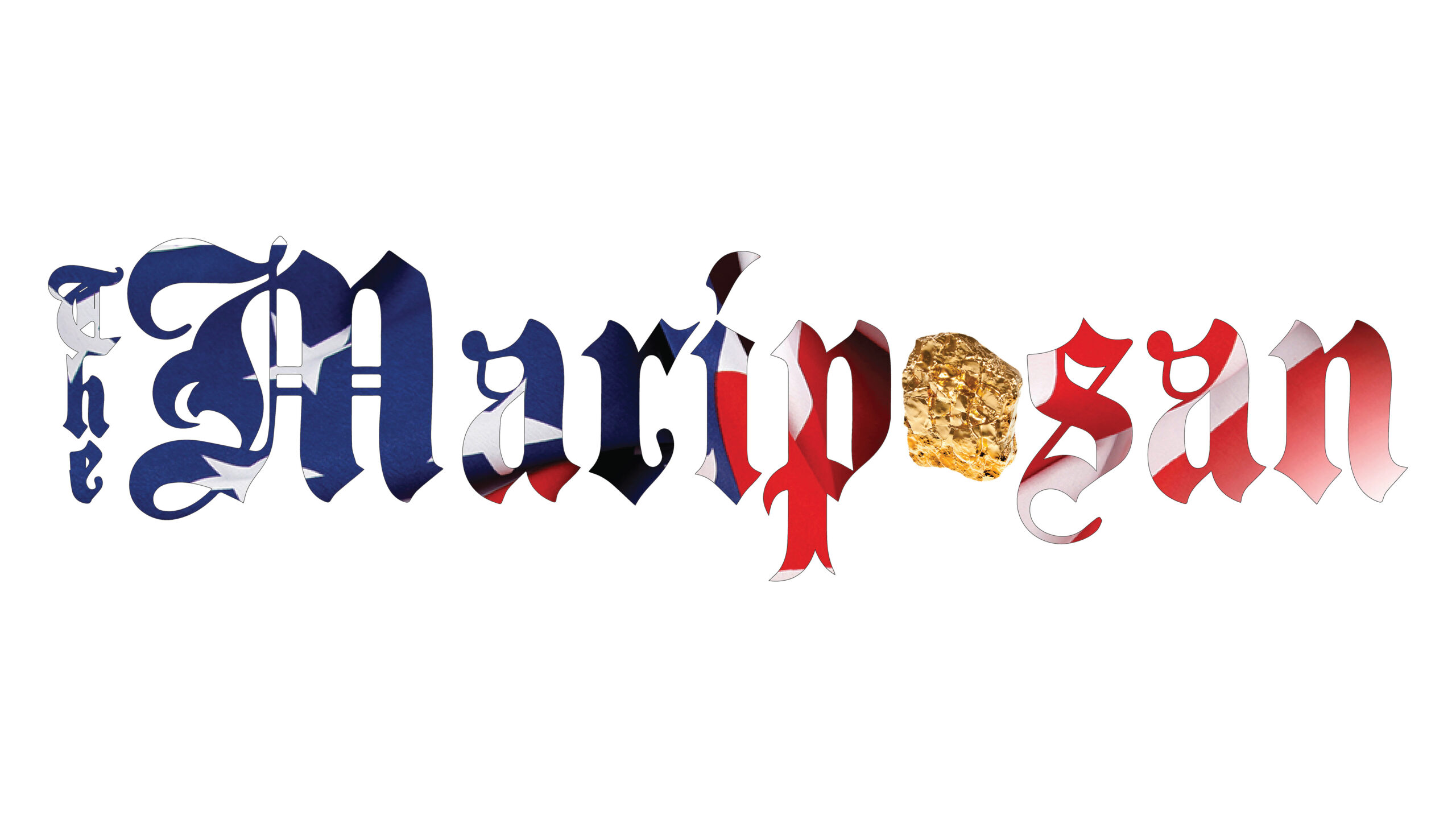
Volunteers bring stamp mill back to life, museum seeks to refill coffers
Antiques from the past take constant maintenance and repair, especially the Gold Rush Era equipment that is located on the grounds of the Mariposa Museum and History Center on Jessie Street just off of Highway 140 in Mariposa.
Almost 10 years ago the museum acquired a two-stamp mill (basically just the mortar box) from the Yellow Metals Mine near Midpines. It was built by Joshua Hendy Iron Works of San Francisco during the Gold Rush.
According to museum President Janet Chase-Williams, “A gold stamp mill operates on the ancient principle of mortar and pestle. Giant stamps (steel or iron-covered wood) are dropped from a great height, pulverizing quartz rock to dust, which frees any gold trapped inside.”
Through hours upon hours of work by volunteers, and material and labor donations from several community businesses, the two-stamp mill has been brought back to life. That effort also involved thousands of dollars in expense to preserve this piece of historical equipment, duplicates of which could be found throughout the Sierra foothills at the height of the Gold Rush and afterward.
“This often-viewed exhibit demonstrates an actual piece of the 49er experience. As with any piece of equipment, it needs attention and repair,” Chase-Williams explained. This two-stamp mill operates just like the giant five-stamp mill located next to the parking lot that is adjacent to the museum.
Despite constant care, the large bull wheel of the two-stamp mill finally completely deteriorated and fell into pieces. To restore the mill, lifetime Mariposa County resident Charlie Wildt and his team of Jeff Lincoln, Robert Bebernes, Patrick Coico, and Keith and Albert Sharp built a new bull wheel – at great expense.
“We all pitched in and did something; getting it up and running was the main thing,” said Wildt. The team started from scratch. The new bull wheel is made out of 1½ inch plywood, redwood fencing and pressure-treated lumber that goes around the outer edge. Wildt explained that it’s all glued and screwed together.
The bull wheel runs the stamp, and this one’s powered by a three-phase electric motor. The water that washes the crushed quartz down the slide to be sifted for gold is recirculated to preserve that resource.
“Back then, they had stream power and waterpower to drive these stamp mills. They had a lot of different ways to power them,” Wildt added.
Wildt also said that the major outdoor feature of the museum, the five-stamp mill, needs a new bull wheel as well.
Anyone wishing to contribute to the preservation of these historical pieces of Gold Rush equipment can contribute at www.nfggive.org/guidestar/94-6050425, or use the QR code displayed.
“Or better yet, come in and visit the Mariposa Museum and History Center at 5119 Jessie Street,” said Chase-Williams.
The Smithsonian Institute described this facility as “The best little museum of its size west of the Mississippi.”
As described on its website, the Mariposa Museum and History Center was, “Founded in 1957, the Mariposa Museum & History Center houses a large array of exhibits interpreting Native American, Spanish Settlement, California Gold Rush, Yosemite, and Mariposa County History. Our World Class Vault contains a large archive of photographs, special collections, and Mariposa County records.”




